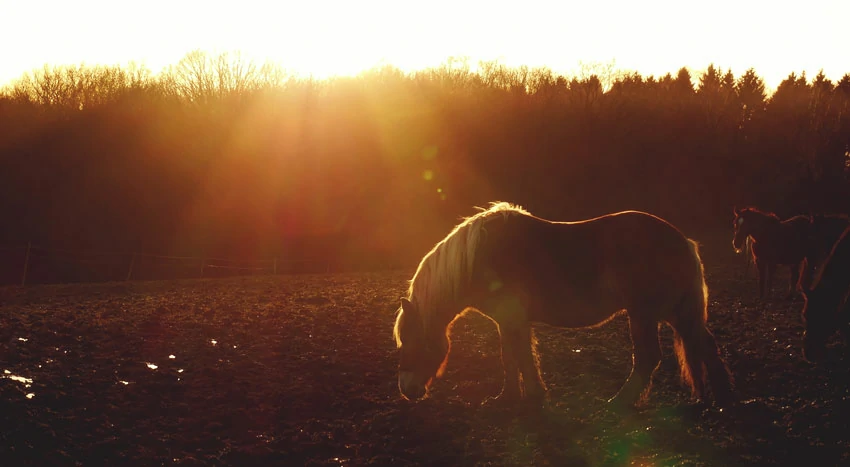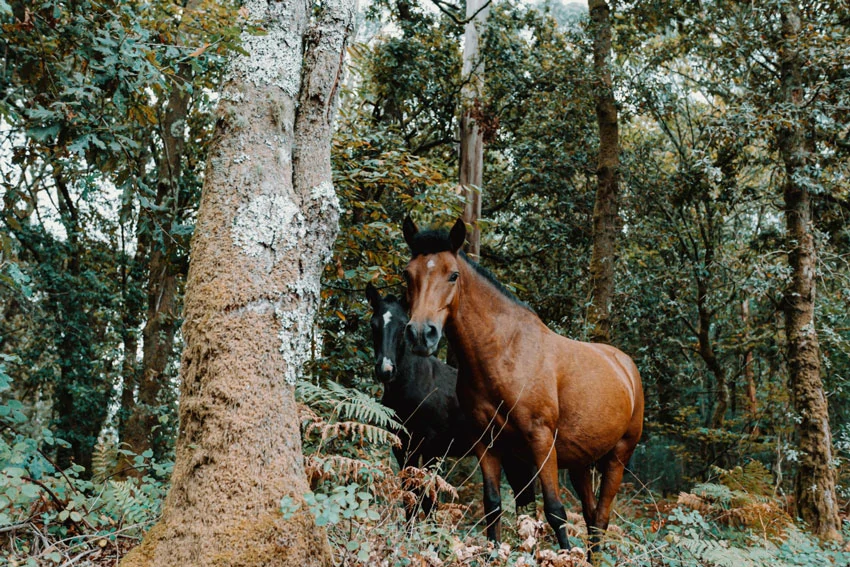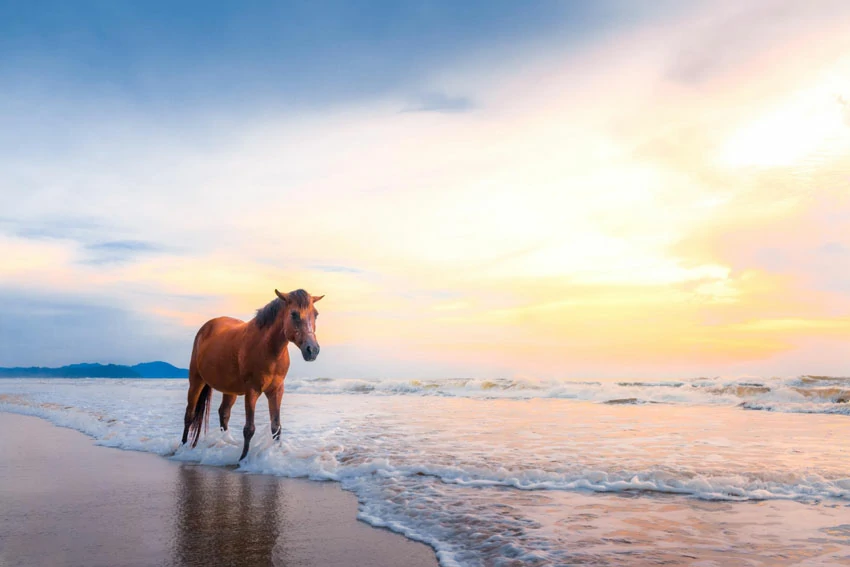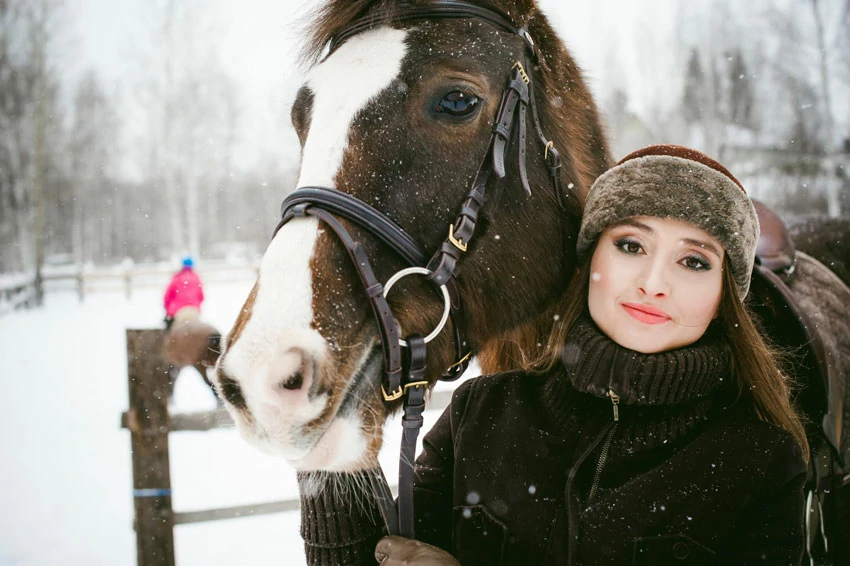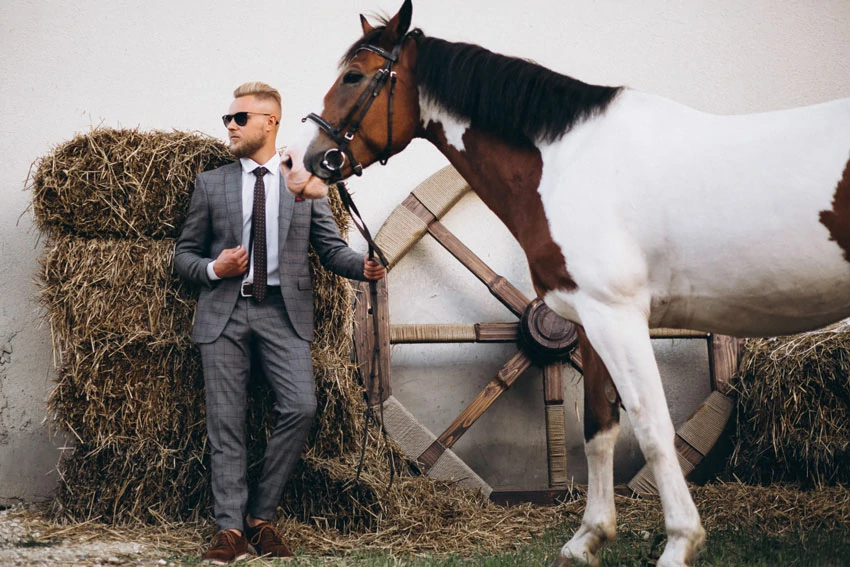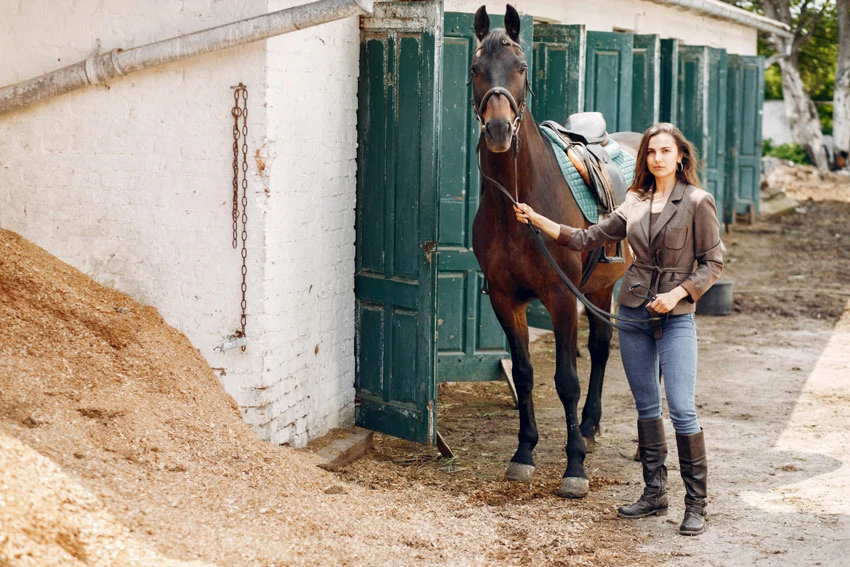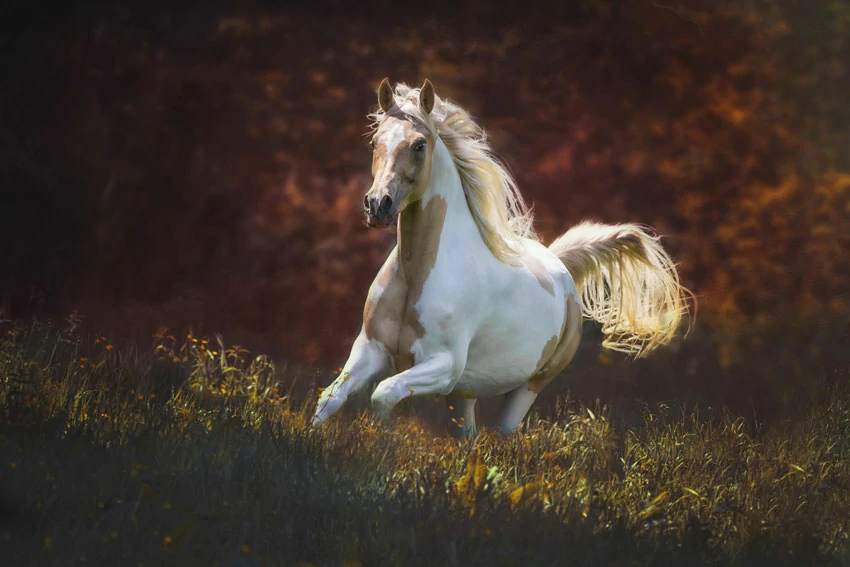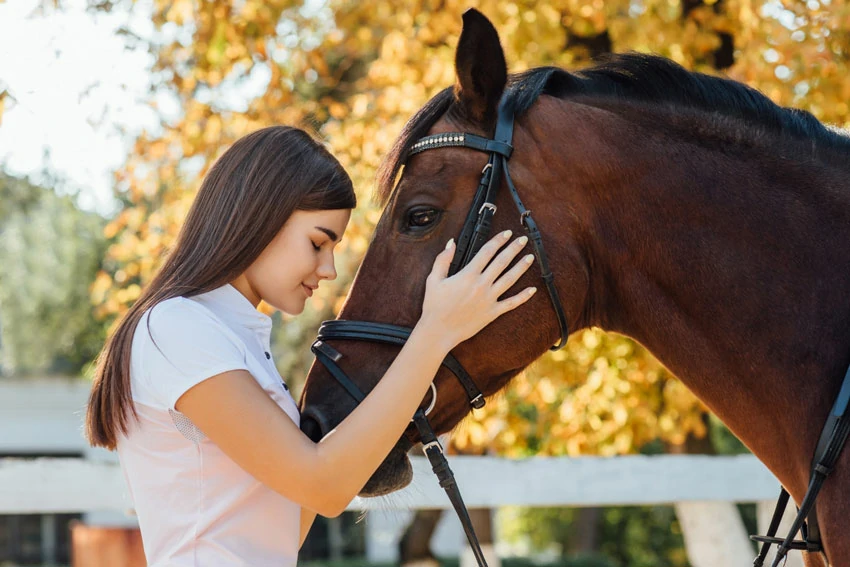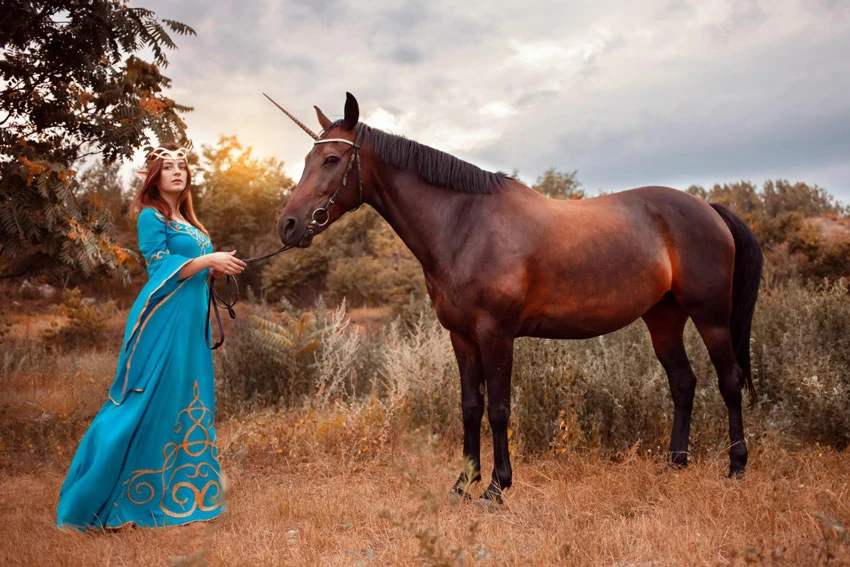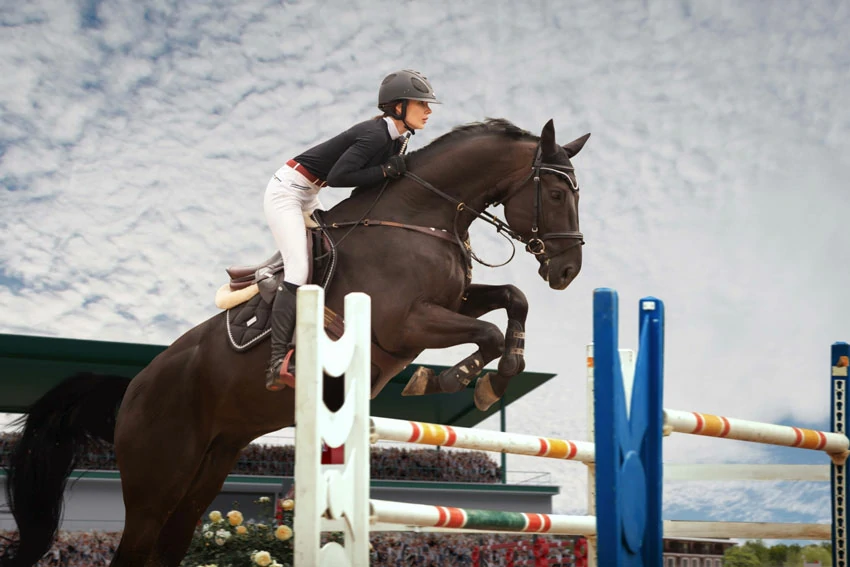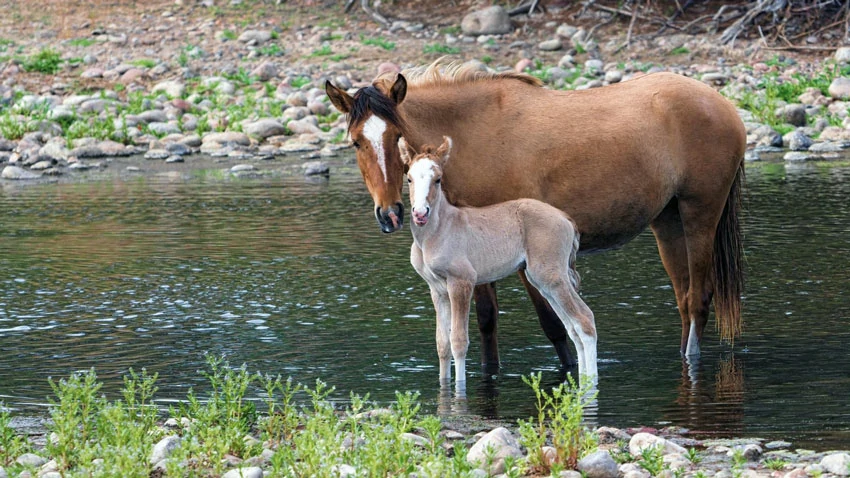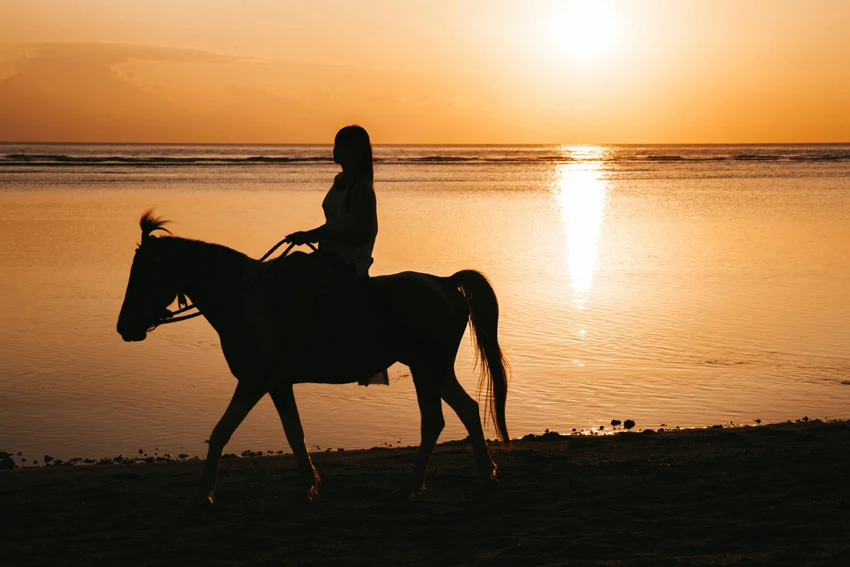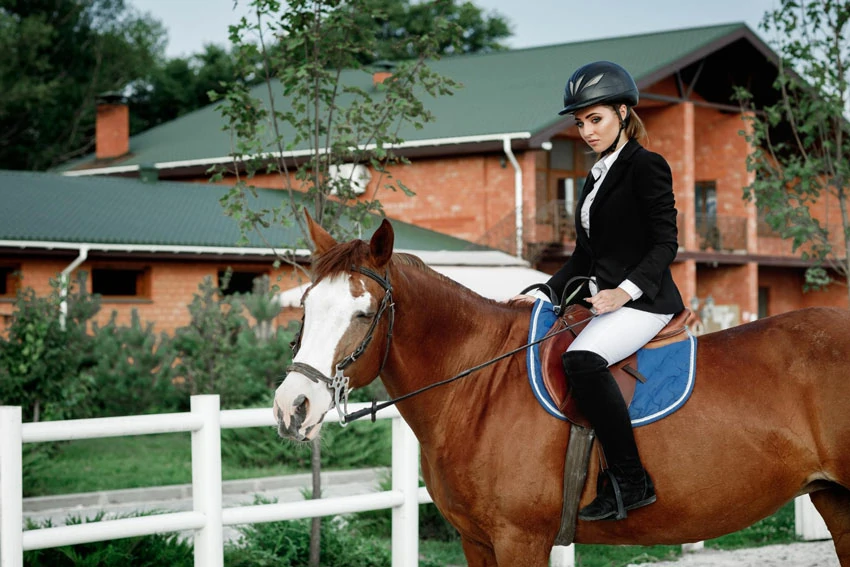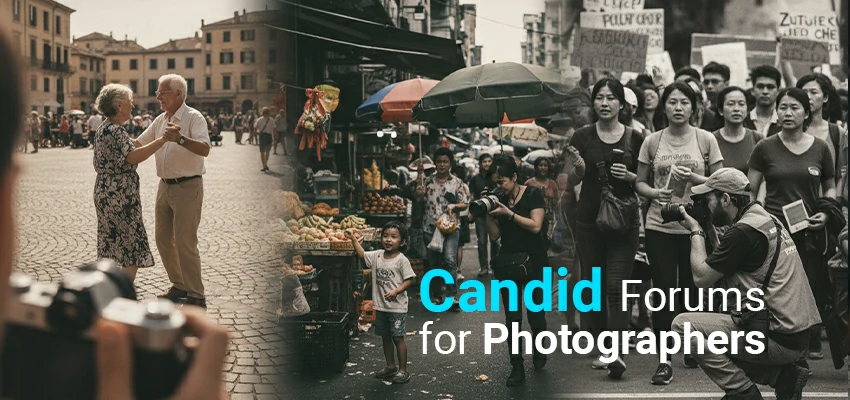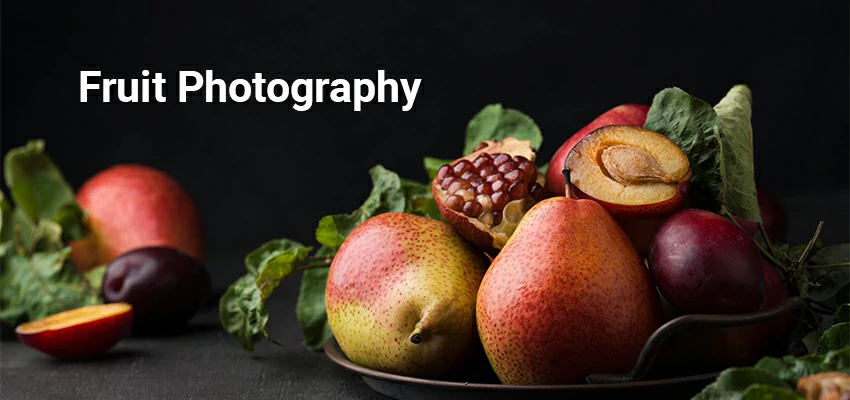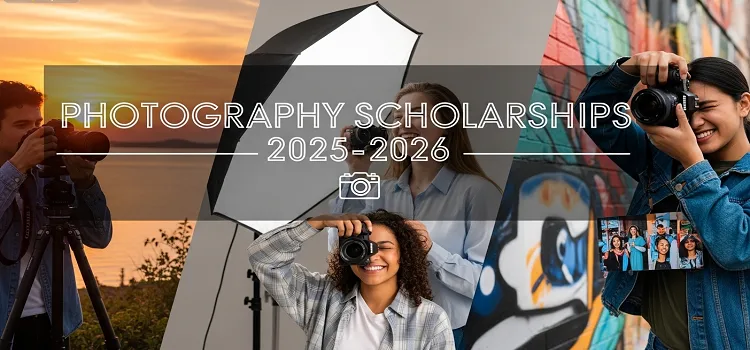Horse Photoshoot Ideas: Creative Concepts for Equine Photography
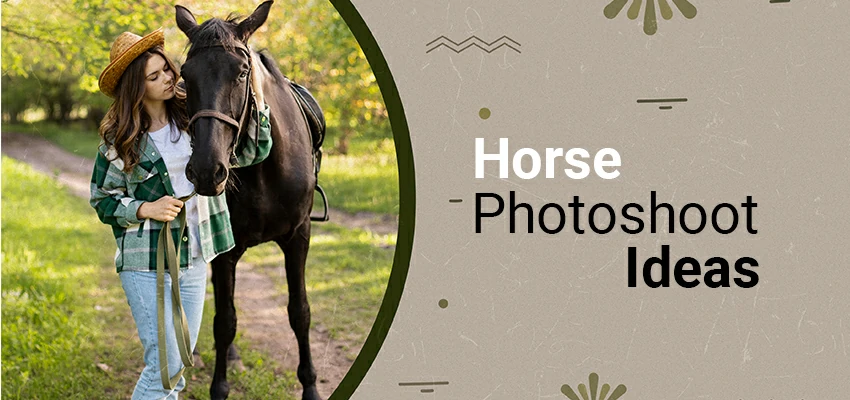
There’s nothing quite like photographing a horse. One moment, they stand like a statue—ears forward, eyes soft, sunlight highlighting every ripple in their coat. Next, they toss their mane as if they have something to say. That blend of grace and grit? It’s pure gold for photos.
Maybe you’re a rider who wants to freeze a special moment with your four-legged best friend. Or a photographer looking to dive into equine photography without the guesswork. Heck, maybe you just adopted your first horse and can’t stop gushing (we get it).
Whatever your reason, a great horse photoshoot isn’t just about pretty pictures. It’s about capturing personality. Connection. That quiet trust between human and horse, or the wild joy of them running free.
And the best part? You don’t need a fancy studio or a show barn. Some of the most powerful shots happen in muddy paddocks at golden hour, on windswept beaches, or even against a weathered barn wall.
In this post, we’re sharing 13 fresh, flexible horse photoshoot ideas that work whether you’re using a DSLR or your phone. So grab your camera, and let’s make some images that feel as alive as your horse.
1. Classic Horse Portrait in Pasture Light
Okay, real talk: the best horse photos I’ve ever taken? Usually happens by accident.
You know the scene, late afternoon, you’re just hanging out in the field, and your horse happens to stand sideways to the sun. Light hits their neck just right. Their eyes catch the glow. And for one stupid-beautiful second, everything clicks.
That’s the pasture portrait. No fancy gear. No posing. Just you, your horse, and that golden window right before sunset (or right after sunrise, if you’re a morning person—respect).
Why does it work? Because horses look alive in soft light. Harsh noon sun? Makes them squint and look grumpy. But golden hour? It wraps around them like a warm hug. Suddenly, their coat has depth. Their muscles have shape. Even that one white sock looks poetic.
A few things I’ve learned the hard way:
– Don’t rush them. If your horse is fidgeting, walk away for a minute. Come back. Let them forget you’ve got a camera.
– Shoot from their level—not standing up like a tourist. Crouch down. Get dirt on your jeans. It makes a huge difference.
– Watch the background; avoid tractors and manure. Move left or right for a clean frame.
2. Moody Forest Equine Photoshoot
Ever taken your horse into the woods and thought, “Wow—this feels like a movie”? That’s your cue.
Forest light has a magical quality. One area remains shadowy and cool, while the next basks in dappled sunbeams filtering through the leaves. It feels moody, mysterious, and textured—ideal for capturing art rather than just moments in photos.
I’ve shot in various forests and trails. It’s not about the trees, but how the horse moves through the space. A slow walk, a curious ear flick, or standing still in the fog – that’s what gives people chills.
A few real-talk tips:
– Go on an overcast day or shoot mid-morning when the sun’s filtered through layers of canopy. Direct sun in the woods just gives you weird hot spots and raccoon eyes.
– Keep your horse calm. Forests can be spooky—new sounds, weird smells. Bring a buddy (human or horse) if they’re nervous.
– Shoot in RAW. You’ll thank yourself later when you’re pulling detail out of those deep shadows without turning everything grainy.
3. Beach Horse Photoshoot: Action & Serenity
Watching a horse run by the sea is powerful poetry. It’s not just about speed, but a dance with nature. Quiet moments, like a horse at dawn, are just as powerful. Stillness speaks loudly, showing strength in silence.
The beach gives you two totally different vibes in one location—raw energy and total peace. And that’s why it’s one of my all-time favorite horse photoshoot spots.
But heads up: it’s not as simple as “show up and shoot.” Sand gets everywhere (in hooves, in your camera gear, in your boots). Tides change fast. And not every horse loves waves crashing at their feet. So test the waters—literally. Walk them in slowly. Let them snort at the ocean. Build trust before you ask for a full gallop.
What actually works:
– Shoot at low tide. More sand = more room to move. Plus, wet sand acts like a natural reflector, bounces light up under their belly so they don’t look flat.
– Early morning is gold. Fewer people, softer light, and the water’s usually calmer.
– Bring a helper. One person to lead or ride, another to shoot. Trying to hold a lead rope and your camera while dodging waves? Not fun.
4. Winter Horse Photoshoot in Snow
Cold toes. Crunchy snow. Steam rising off a horse’s back like they’re breathing out little clouds of magic. Yeah, winter shoots are worth the numb fingers.
A lot of people pack up their cameras when the first snow falls. Big mistake. Because a horse in the snow? It’s pure contrast. Dark coat against white ground. Frost on their eyelashes.
That alert, “Is this normal?” look they give when snow squeaks under their hooves. It’s cinematic without trying.
But let’s keep it real: this isn’t just about pretty pictures. Horses are warm-blooded creatures. They’re not snow machines. So your priority isn’t the shot—it’s their comfort.
Here’s how I do it:
– Keep it short. 20–30 minutes max, unless your horse is bred for cold (looking at you, Icelandic or Fjord owners).
– Shoot midday when it’s warmest—not at golden hour, ironically. Better to have slightly flat light than a shivering horse.
– Brush them out before you go. A clean, dry coat traps heat. Wet or muddy? They’ll get cold fast.
– And never, ever hose them down after. Towel dry, blanket up, and offer warm water. Treats help too; carrots taste better when they’re frozen.
5. Minimalist Studio Horse Photoshoot
You don’t need a scenic backdrop for great horse photos. A plain wall, good light, and confidence are enough. Focus on the horse itself and capture its essence. Each snapshot can tell a story.
Studio-style equine photography isn’t about fancy backdrops or smoke machines. It’s about forcing the viewer to look at the horse. The curve of the neck. The set of the ears. The quiet intensity in their eyes. No distractions. Just a horse.
I know, most of us don’t have a 2,000-square-foot studio with seamless paper rolls. But you don’t need one. A clean barn aisle with white walls? A garage with the door open on an overcast day? Even a shaded corner with a plain fabric backdrop works.
Here’s what actually matters:
– Lighting: Soft, even, and shadow-controlled. Overcast daylight is your best friend. If you’re indoors, bounce light off white boards or use a large diffuser. Harsh shadows ruin the minimal vibe.
– Groom like your life depends on it. Every speck of dust shows up when there’s nothing else in the frame. Hooves polished. Coat gleaming. Eyes clear.
– Shoot at eye level. Not from above, not from below, right where the horse lives. It creates intimacy, not intimidation.
6. Rustic Farm Equestrian Photoshoot
There’s a reason old barns, weathered fences, and leather tack never go out of style; they’ve got soul. A rustic farm photoshoot isn’t about pretending you’re in a period drama (unless you want to be—hey, no judgment).
Horseback riding is a thrill, full of adventure. The rustic charm beckons. I treasure the blissful moments with my horse, free from life’s distractions.
Here’s how to make it work:
– Scout your spot first. Look for clean lines: a straight fence, a peeling barn door, or a wagon wheel on a post.
– Dress the part lightly. A simple cotton shirt, boots, maybe an old vest. No logos, no neon. Let the textures speak: wool, leather, denim, wood.
– Use what’s already there. A bucket, halter, and rope are part of your story. Remove anything that looks out of place in the scene, like modern items.
7. Liberty Horse Photoshoot: Freedom in Motion
Okay, full confession: I used to hate liberty shoots. Not because they’re boring; they’re the opposite. But because I kept trying to make them happen. Like, “Okay, horse! Now trot in a perfect circle while looking soulful!” Spoiler: that never works.
Liberty isn’t a pose. It’s the mood. A moment. And it only shows up when you stop chasing it.
The best liberty photos I’ve ever taken? I wasn’t even ready. I had my camera down, checking my phone, and suddenly—whoosh, the horse spun past me like a tornado with hooves. All I did was lift the camera and pray.
That’s the thing. You can’t direct this. You can only be ready.
Half the time, nothing happens. The horse grazes, scratches, or stares at a bird. But then, it breaks into a slow, floating trot, tosses its head, and locks eyes with its person. That’s your shot.
A few real-world hacks:
– Don’t wear black. Or white. Or anything that screams “I’m here!” Horses notice. And if they’re distracted, you get stiff, wary photos.
– Shoot from the ground, lying on your side if needed. This changes the perspective, putting you in their world.
– Avoid yelling “Look here!” as it breaks the spell. Some great shots are profiles, backs, or ears pricked towards something unseen.
8. Horse & Human Bond: Emotional Equestrian Portraits
The best horse photos aren’t just about perfect form or great lighting; they’re about connection. You know the ones I mean. Forehead against the horse’s cheek, eyes closed. Tiny hand wrapped around a velvety muzzle, horse frozen still.
That’s the stuff that wrecks people in the best way.
Forget posing, just be. Ditch “chin up, smile”. Instead, hang out with your horse, groom them. Let them nuzzle your pocket. The camera captures the real moments when you stop performing.
A few things that actually work:
– Shoot in a place your horse feels safe—their stall, favorite corner of the pasture, under that one tree they always stand under. Comfort shows.
– Turn off the flash. Harsh light kills intimacy. Use window light, open shade, or golden hour. Softness = emotion.
– Get close physically and compositionally. Fill the frame with hands, eyes, shared glances. You don’t need the whole horse and whole person. Sometimes a hand on a neck says more than a full-body shot.
9. Fantasy-Themed Horse Photoshoot
Sometimes you want a horse photo that’s not realistic. You want a magical look, like a moonlit fairy tale or a stardust glow, or a pony wearing flowers like a queen. And guess what? That’s totally allowed.
Fantasy horse photoshoots aren’t about Photoshop overload (though a little magic in post never hurts). They’re about leaning into imagination—yours, your horse’s, even your kid’s.
Ever seen a horse prance through a field like they know they’re magical? Yeah. That’s your opening shot. Location matters more than you think. Misty mornings in a meadow?
Instant ethereal. Backlit woods with sunbeams? Hello, enchanted forest. Even your own backyard at dusk with some string lights can work if you angle it right.
A few hard-won truths:
– Don’t force it. Skip headpieces and stiff costumes if your horse dislikes them. A single flower behind the ear and great light create more magic.
– Shoot wide open (f/2.8 or lower) to blur the background into dreamy softness. Reality should feel distant.
– Edit with restraint. Boost glow, soften highlights, maybe add a subtle vignette, but if the horse looks like a video game character, you’ve gone too far.
10. Action-Packed Equestrian Sports Photoshoot
Action shots aren’t just for competition programs or sponsor reels. They’re for anyone who’s ever watched their horse fly over a jump and thought, “I wish I could freeze that feeling.” But here’s the thing: nailing motion isn’t about luck. It’s about prep.
First, shutter speed is non-negotiable. If you’re below 1/1000th of a second, you’re gambling. For galloping? Go 1/2000 or faster. You want tack-sharp hooves, not a watercolor blur (unless that’s your artistic choice, but that’s a different post).
Second, get out of the way. Don’t stand where the horse is going. Don’t wave your arms or shout. Action shots die the second the rider or horse gets distracted. Be a ghost with a camera.
Third, shoot in burst mode. A fleeting moment, like a jump’s arc or a dressage trot, lasts an instant. Capture a sequence to find the perfect shot later.
And don’t just shoot from the side. Try:
– Low angles (lie on the ground!) to boost height and drama.
– Panning—move your lens with the action at a slower shutter (1/125–1/250). This blurs the background but keeps the horse sharp. It feels fast.
– Behind the rider for that “you are there” intensity.
11. Foal & Mare Photoshoot: Tenderness in Equine Photography
Look, foals are basically four-legged puppies with hooves. And if you’ve ever seen a newborn wobble up to its mom for a drink, or a mare nuzzle her baby like, “Yeah, you’re mine,” you know these moments don’t just melt hearts. They shatter them.
But photographing them? It’s equal parts magic and chaos. Foals nap for 90 seconds, then sprint. They’re clumsy and sneeze milk out of their noses. The mare is either protective or exhausted.
A few things that actually help:
– Shoot early morning. Foals are calmer before the heat and flies kick in. Mares are less jumpy.
– Use a 70-200mm telephoto lens and keep a safe distance.
– Keep your movements slow. No sudden steps. No loud voices. Talk softly if you talk at all.
– Get down low—like, belly-on-the-dirt low. Foals are small. Shooting from above makes them look lost. Eye-level makes them feel real.
12. Sunset Silhouette Horse Photoshoot
You don’t need perfect conformation or a shiny coat. You don’t even need the horse to look at the camera. All you need is a strong outline, a blazing sky, and the guts to underexpose your shot.
Silhouettes strip everything down to shape and story. No distractions. No details. Just the unmistakable curve of a neck, the arch of a leaping body, or the quiet profile of a horse and rider against a sky on fire.
And honestly? It’s one of the easiest horse photoshoot styles to pull off—if you stop overthinking it. Here’s the secret:
Your subject should be between you and the sun. Not beside it. Not with the sun behind you. In front of it. That’s how you get that clean, dark cutout against the color.
Now, your camera will try to “fix” this. It’ll want to brighten the horse, blow out the sky, make everything gray and sad. Don’t let it.
– Switch to manual or spot metering.
– Meter for the sky—not the horse.
– Let the horse go black. That’s the point.
13. Urban Equestrian Photoshoot: City Meets Stable
But what if I told you that I once saw a horse in a really unexpected place? Last spring, I took a striking photo of a mare under a graffiti-covered overpass.
Despite the chill, steam rose from her back as subway trains rumbled above. What amazed me was how naturally she fit in, as if she ruled the streets.
Urban equestrian photoshoots aren’t just a gimmick. They make a statement. Horses aren’t relics. They’re here, adapting and thriving in the cracks of our concrete world.
But before you haul your horse downtown:
– Check local laws. Some cities don’t allow horses on certain streets. Don’t get fined (or worse, spook your horse in traffic).
– Go early or late. Fewer cars, fewer people, better light.
– Bring a handler—Find someone to manage the horse while you scout angles. Cities are unpredictable, so your horse needs to feel secure.
To Conclude
Your best horse photos won’t come from a checklist. They’ll happen when you least expect it. It’s that split second when your horse looks at you as if you’re the only person in the world. Or when a foal stumbles into its mum’s shoulder at dawn.
Forget perfect lighting or matching halters. Shoot what feels right, not what’s trending. Some of my favorite shots were taken with my phone, boots caked in mud, hair full of hay.
You won’t care in ten years if the exposure was spot-on. You’ll care that you caught the way their ears perked when you called their name… or how they stood, quiet and steady, like they knew you needed it.
So relax. Watch. Be there. The rest will follow.
FAQs: Horse Photoshoot Ideas
Do I need a fancy camera to shoot horses?
Nah. Great shots happen on phones, too. Light and timing matter more than gear.
My horse won’t stand still, what now?
Don’t fight it. Shoot during calm moments or capture their natural energy. Movement can be magic.
Best time to shoot?
Golden hour, just after sunrise or before sunset. Soft light, happy horse.
Use treats or a handler?
Yes to both. Keeps your horse calm and gives you a few precious seconds of focus.
How to keep my horse comfortable in themed shoots?
Skip anything they hate. Comfort > concept. A stressed horse ruins the vibe and the photo.
Hire a pro or DIY?
DIY if you’re behind the lens. Hire a professional if you want to be in the photos or need high-quality prints.
One quick tip for horse photography?
Shoot at their eye level. Get low. It makes all the difference.


